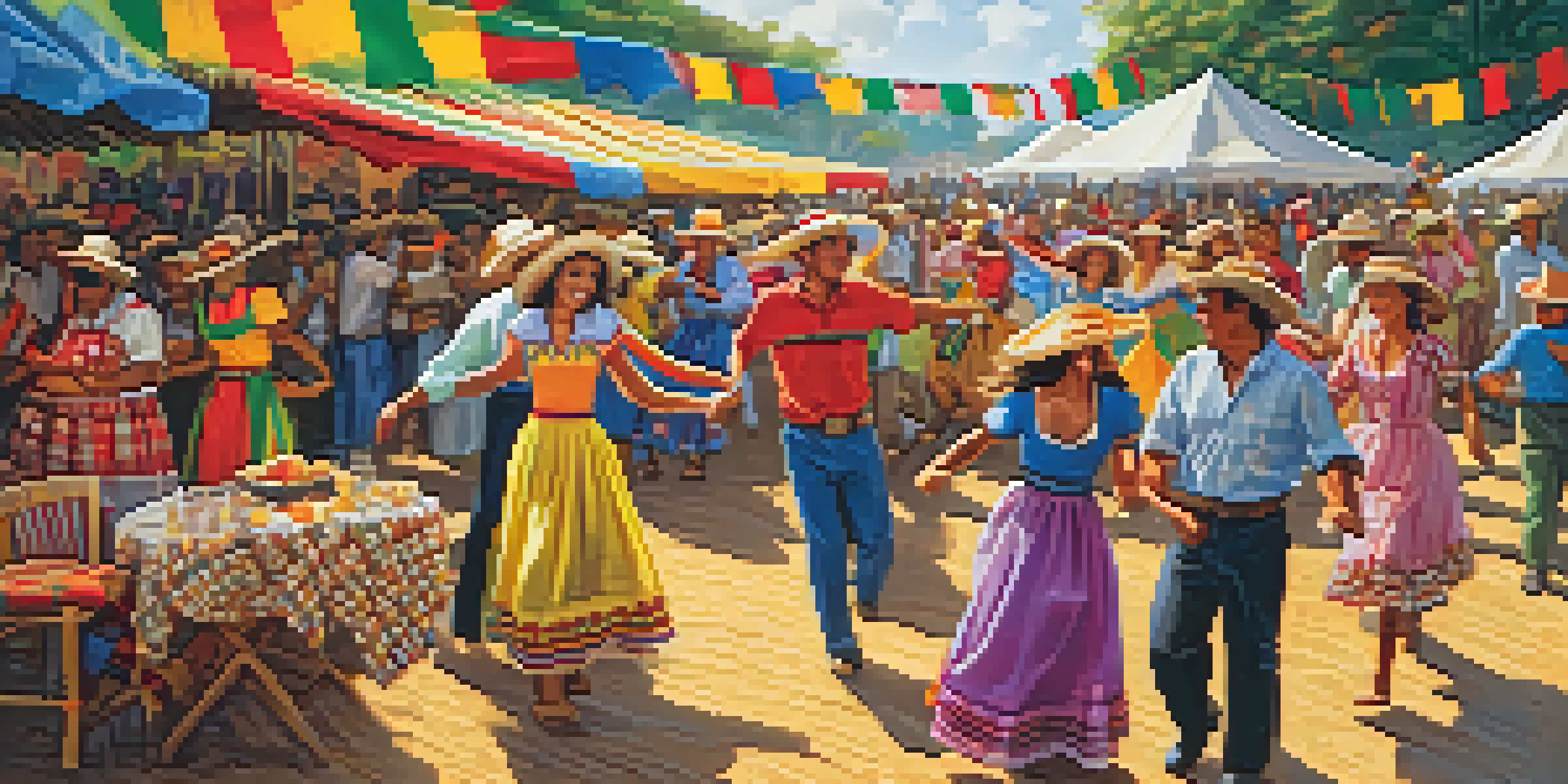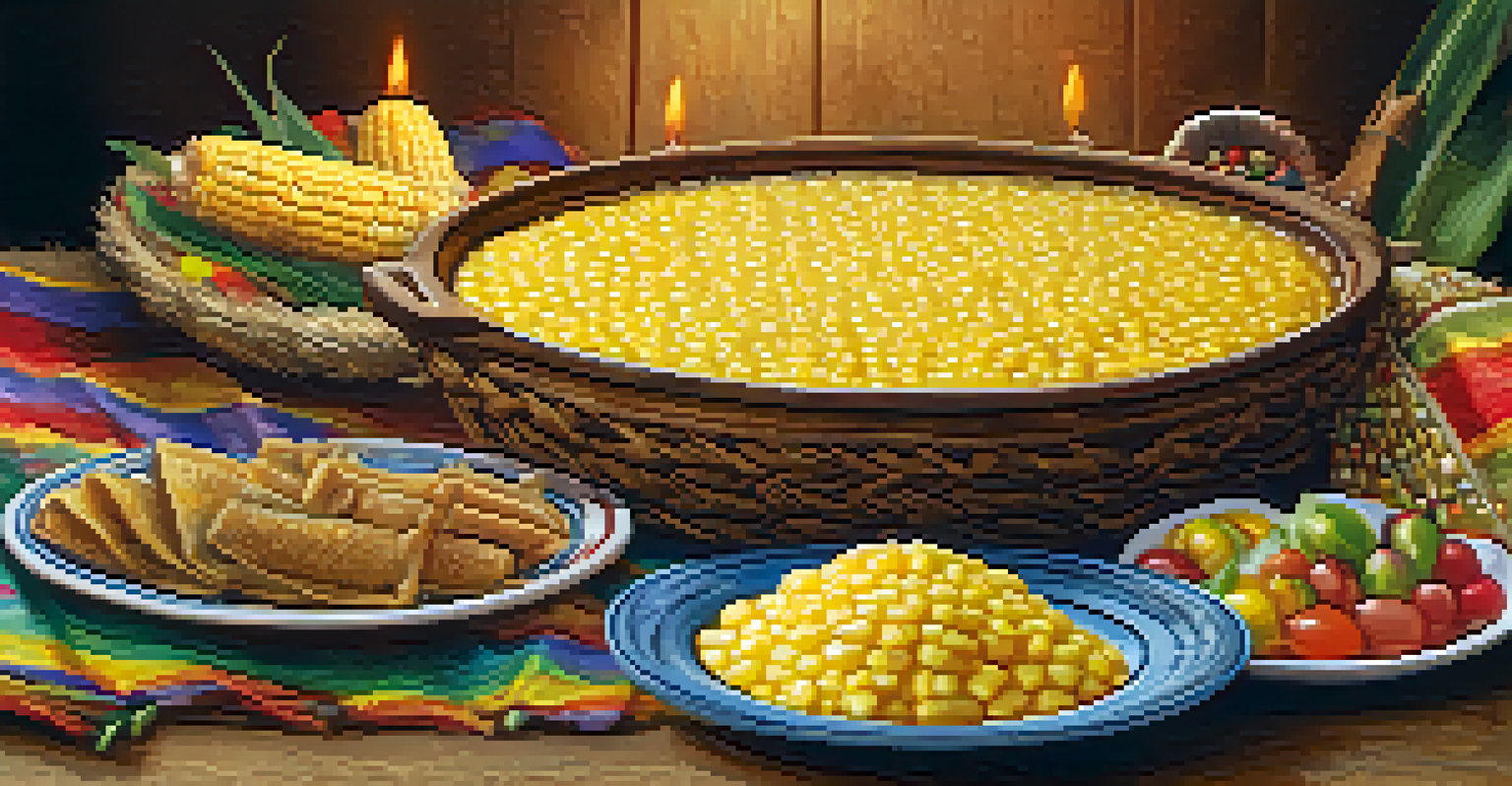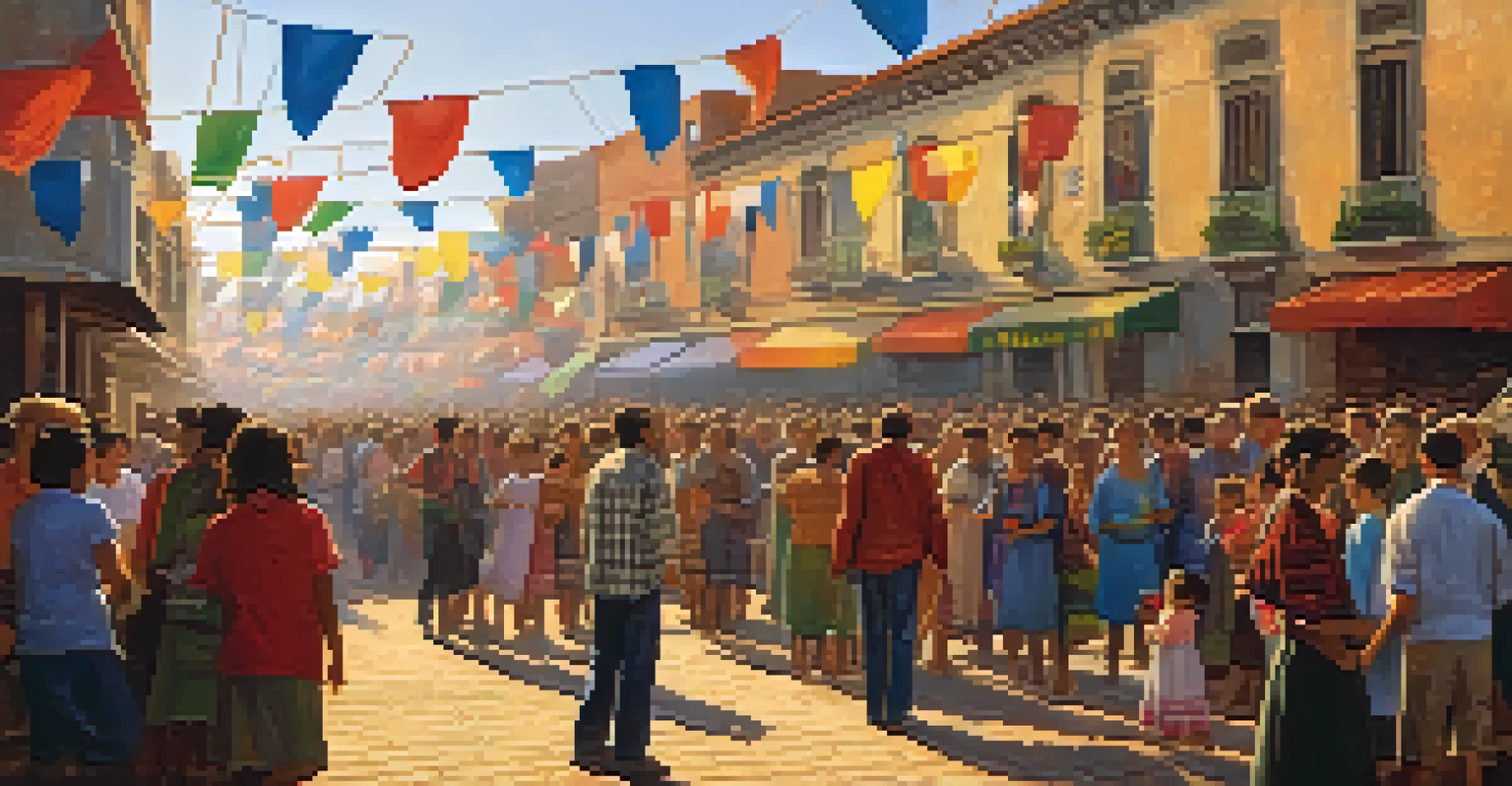The Significance of Festa Junina in Brazilian Culture

The Origins of Festa Junina in Brazil
Festa Junina, celebrated in June, has deep roots in Brazilian culture, stemming from both European and indigenous influences. Originating from the European midsummer festivals, it combines elements from Portugal, Spain, and France, reflecting the diverse heritage of Brazil. The festival honors St. John, St. Anthony, and St. Peter, intertwining religious significance with lively celebrations.
Tradition is not the worship of ashes, but the preservation of fire.
As agriculture plays a crucial role in Brazil, Festa Junina also marks the end of the harvest season. It’s a time when families come together to celebrate the fruits of their labor, making it a significant agricultural festival. The event serves as a reminder of the importance of community and shared resources in rural areas.
Over the years, Festa Junina has evolved, incorporating various regional customs and flavors. From the colorful decorations to the traditional dances, each region in Brazil adds its unique twist, showcasing the country’s rich cultural tapestry. This evolution highlights how traditions can adapt while still maintaining their core significance.
Traditional Foods That Define the Celebration
One of the most delightful aspects of Festa Junina is its array of traditional foods. Celebrants indulge in a variety of treats, such as pamonha (a type of corn pudding), canjica (sweet corn pudding), and quentão (a hot spiced drink). These dishes not only tantalize the taste buds but also symbolize the harvest and the bounty of the earth.

These foods are typically made from locally sourced ingredients, reflecting Brazil’s agricultural richness. The preparation of these dishes often involves family gatherings, where recipes are passed down through generations. This aspect of cooking together fosters a sense of unity and strengthens family bonds during the festival.
Cultural Roots of Festa Junina
Festa Junina blends European and indigenous influences, celebrating agricultural heritage and community ties.
Additionally, the act of sharing food during Festa Junina emphasizes community. Neighbors often share their culinary creations, creating a festive atmosphere filled with laughter and camaraderie. This spirit of sharing is a reminder of the importance of togetherness, especially in a world that can sometimes feel disconnected.
Colorful Decorations and Festive Atmosphere
The visual spectacle of Festa Junina is hard to miss, with vibrant decorations adorning homes and public spaces. Colorful banners, straw hats, and checkered tablecloths create an inviting atmosphere that captivates both participants and onlookers. These decorations symbolize the joyous spirit of the festival and enhance the sense of celebration.
Food is our common ground, a universal experience.
The use of traditional motifs, such as the 'mastro' (a tall pole adorned with flags), adds to the festive ambiance. This centerpiece often becomes the focal point for various activities, including dances and games. The decorations embody the essence of rural life, reminding everyone of Brazil's agrarian roots.
Moreover, the lively atmosphere is further amplified by the sounds of music and laughter. People come together to dance traditional quadrilhas, a type of folk dance that encourages participation from all ages. This combination of sights and sounds creates an immersive experience that leaves lasting memories.
The Role of Music and Dance in the Festival
Music and dance are integral components of Festa Junina, bringing the celebrations to life. Traditional songs, often played on instruments like the accordion and the triangle, fill the air, inviting everyone to join in the festivities. These melodies are not just background noise; they tell stories of rural life and the joys of the harvest.
Quadrilha, a popular folk dance, is a highlight of the festival, characterized by its lively steps and group formations. Participants often dress in traditional attire, adding to the visual delight of the performance. This dance is a wonderful way to engage the community, as it encourages everyone to participate, regardless of skill level.
Festive Foods and Togetherness
Traditional foods like pamonha and canjica symbolize the harvest and bring families together, fostering unity and sharing.
The rhythmic beats and cheerful tunes create an infectious energy that brings people together. It's common for families and friends to gather, dance, and enjoy each other's company, fostering a sense of belonging. Through music and dance, Festa Junina nurtures community spirit and shared joy.
Religious Significance and Spiritual Elements
At its core, Festa Junina is not just a cultural celebration but also a religious observance. The festival honors several saints, particularly St. John, who is associated with fertility and harvest. Many families incorporate religious traditions into their festivities, offering prayers and attending masses in honor of the saints.
This spiritual aspect of the festival underscores the connection between agriculture and faith in Brazilian culture. Many believe that by celebrating the saints, they can ensure a bountiful harvest in the coming year. Thus, the festival serves as a time for reflection and gratitude for the blessings received.
By intertwining faith with festivity, Festa Junina becomes a holistic celebration of life, where spirituality and joy coexist. This melding of the sacred and the celebratory deepens the significance of the event, making it a treasured occasion for many Brazilians.
Regional Variations of Festa Junina Across Brazil
While Festa Junina is celebrated nationwide, each region of Brazil adds its unique flair to the festivities. In the northeast, for example, the celebrations are often more vibrant, with lively forró music and elaborate costumes. The focus on traditional dances and local customs creates an atmosphere rich in cultural expression.
In contrast, the southern regions might emphasize different culinary specialties and folk traditions. Here, the festival may feature unique games and competitions, showcasing the area's distinct cultural heritage. These regional variations highlight the diversity within Brazilian culture and how local traditions can shape collective celebrations.
Vibrant Celebrations Across Brazil
Regional variations of Festa Junina highlight the diverse cultural expressions while maintaining core themes of joy and community.
Despite these differences, the core themes of community, gratitude, and joy remain consistent across the country. This unity in diversity exemplifies how Festa Junina brings together Brazilians from all walks of life, celebrating their shared heritage while honoring their unique regional identities.
Festa Junina: A Celebration of Identity and Community
Festa Junina is more than just a festival; it is a celebration of Brazilian identity and community spirit. It offers a chance for people to connect with their roots, celebrating cultural heritage while enjoying the present moment. The festival serves as a reminder of the importance of traditions in fostering a sense of belonging.
As cities become more urbanized, festivals like Festa Junina offer a vital link to the past, allowing people to reconnect with their agricultural heritage. This connection to traditions helps preserve cultural identity, ensuring that future generations can appreciate the richness of their heritage.

Ultimately, Festa Junina embodies the spirit of togetherness, inviting everyone to partake in the joy and vibrancy of Brazilian culture. Whether through food, music, dance, or shared experiences, the festival reinforces the bonds within communities and celebrates the beautiful tapestry of Brazilian life.